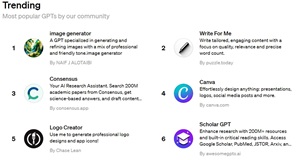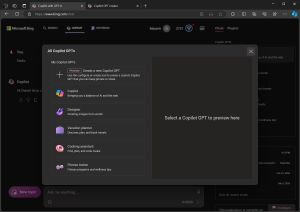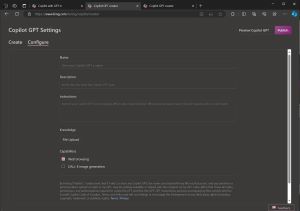News
Microsoft Copilot AI Gets Pro 'GPT Builder' and Offers GPT-4 Turbo to All
Microsoft keeps making news with its AI-powered assistant, Microsoft Copilot, which is now getting a new GPT Builder for "Pros" while the supercharged GPT-4 Turbo model is now available to everyone.
The company on Friday announced its own GPT Builder for Pro subscribers that can be used to create customized Copilot versions. The move follows the launch of a similar initiative from partner OpenAI, which debuted its GPT Store in January for users to create and share custom chatbots based on the GPT series of large language models (LLMs), the foundational machine learning tech that powers advanced generative AI systems.
"A Copilot GPT is a custom version of Copilot that can be used for specific purposes, such as for specialized knowledge, implementing specific processes, or simply to save time by reusing a set of AI prompts," Microsoft explained in a March 8 post. "For example, a grocery shopping Copilot GPT can be used to create a grocery list based on a meal plan that you send to the Copilot GPT."
OpenAI's GPT Store, upon debut, sported a variety of customized chatbots, with research assistants being a popular use case. The screenshot below shows what's trending there now.
 [Click on image for larger view.] Trending OpenAI GPTs (source: OpenAI).
[Click on image for larger view.] Trending OpenAI GPTs (source: OpenAI).
Not paying $20/month for MS Copilot Pro ourselves, we can't provide a screenshot of trending Copilot GPTs or anything else about the new GPT Builder, but Mayank Parmar provided some images on social media.
 [Click on image for larger view.] Copilot GPTs (source: Mayank Parmar).
[Click on image for larger view.] Copilot GPTs (source: Mayank Parmar).
 [Click on image for larger view.] Copilot GPT Settings (source: Mayank Parmar).
[Click on image for larger view.] Copilot GPT Settings (source: Mayank Parmar).
Judging from Parmar's explanation, it works just like OpenAI's GPT Store:
You can either create GPTs through a conversation with Copilot or directly share the following details:
- Name: You can give your chatbot a name, like a nickname, so you can tell it apart from others
- Description: Write a short note about what your chatbot is for or what it can do.
- Instructions: This is where you tell your chatbot how it should act.
- Knowledge: You can upload files here to teach your chatbot more information.
- Capabilities: You can choose what skills your chatbot will have. For example, it can look things up on the web or create pictures from descriptions.
Once done, hit the publish button.
Microsoft explained some more, too. "If you have a Copilot Pro subscription, you can use Copilot GPT Builder to create, edit, and publish customized Copilot GPTs," said the company, which provided links to
Doing all that requires a Copilot Pro subscription and Microsoft Edge or Google Chrome on Windows or Mac computers, though Copilot GPTs can be used on mobile devices also.
"When you share your Copilot GPTs with other people by giving them your custom Copilot GPT link, they don't need to have a Copilot Pro subscription to use your Copilot GPT," Friday's announcement said. "Only you can edit your Copilot GPTs, so you can share the link to your Copilot GPT without worrying about others changing or deleting it. You can also choose to stop sharing your Copilot GPTs with others."
While OpenAI's GPT Store was marred by some controversy such as users blatantly copying GPTs and publishing them under their own name, we haven't seen any similar reports for Microsoft's effort.
But stay tuned for that.
GPT-4 Turbo for Everyone
Microsoft's Mikhail Parakhin, meanwhile, also took to social media to announce that, "After quite some work, GPT4-Turbo replaced GPT-4 in the Copilot free tier. Pro users can still choose the older model, if prefer (there is a toggle)." Those models were created by partner OpenAI.
Subsequent chatter indicates it's free at all times, and in both Creative mode and Precise mode. When asked if all three models (including Balanced) use it, Parakhin replied: "Yes, but in a different 'amount'. Creative and Precise are (almost fully) GPT-4-Turbo, Balanced is in certain cases only (and for the inner monologue often)."
OpenAI explains the difference between its advanced models here.
About the Author
David Ramel is an editor and writer at Converge 360.